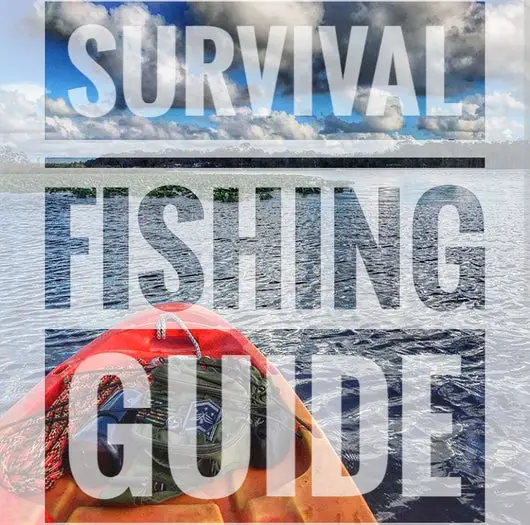Are you an adventurer who likes to explore the great outdoors? Whether you’re planning a camping trip or finding yourself in a survival situation, knowing how to fish can be an invaluable skill. In this article, we will provide you with a comprehensive guide to survival fishing, sharing techniques and tips to help you catch fish in any situation. From constructing makeshift fishing gear to identifying the best fishing spots, we’ve got you covered. So grab your fishing rod and get ready to embark on a thrilling journey of self-reliance and resourcefulness!
Choosing the Right Fishing Gear
Understanding the Basics
When it comes to fishing, having the right gear is essential. Before you start assembling your fishing equipment, it’s important to understand the basics. Fishing gear typically consists of a fishing rod, fishing line, hooks, lures, and other accessories. Each component plays a crucial role in helping you catch fish, so it’s important to choose them wisely.
Selecting the Right Fishing Rod
The fishing rod is the key tool in your fishing arsenal. There are various types of fishing rods available, each designed for a specific purpose. When selecting a fishing rod, consider factors such as the type of fishing you plan to do, the size of the fish you’re targeting, and your level of experience. It’s important to find a rod that feels comfortable and suits your needs, so don’t hesitate to test out different options before making a decision.
Choosing the Right Fishing Line
The fishing line is the connection between you and the fish. It’s important to choose a fishing line that is strong enough to handle the weight of the fish you’re targeting, yet thin enough to be inconspicuous in the water. There are various types of fishing lines available, such as monofilament, fluorocarbon, and braided lines. Each has its own advantages and disadvantages, so it’s important to consider factors such as visibility, strength, and flexibility when making your selection.
Picking the Proper Hooks and Lures
Hooks and lures are essential in attracting and catching fish. Different types of hooks and lures are designed to target specific species of fish and imitate their natural prey. When choosing hooks and lures, consider factors such as the size and type of fish you’re targeting, the conditions you’ll be fishing in, and the behavior of the fish. It’s important to have a variety of hooks and lures in your tackle box to increase your chances of success in different fishing situations.
Mastering Essential Fishing Techniques
Casting and Retrieving
Casting and retrieving is one of the fundamental techniques in fishing. It involves casting your bait or lure into the water and retrieving it in a way that simulates natural movement. To master this technique, practice your casting skills to ensure accurate placement of your bait or lure. Experiment with different retrieval techniques, such as steady retrieves, jerking motions, or pausing at certain intervals, to see which method attracts the most fish.
Bottom Fishing
Bottom fishing is a technique commonly used for catching fish that dwell near the bottom of lakes, rivers, or oceans. It involves dropping your bait or lure to the bottom and waiting for the fish to bite. When bottom fishing, it’s important to choose the right spot where fish are likely to congregate. Use sinkers or weights to keep your bait or lure near the bottom and be patient, as bottom fishing often requires waiting for a bite.
Trolling
Trolling is a technique that involves dragging a bait or lure behind a moving boat. It’s an effective method for covering a large area and targeting fish that are actively feeding. When trolling, choose lures that mimic the fish’s natural prey and adjust your speed to match the desired depth. Vary your trolling patterns and speeds to find what works best for the specific conditions and fish you’re targeting.
Fly Fishing
Fly fishing is a popular technique among anglers who enjoy the challenge of using artificial flies to catch fish. It requires casting a lightweight fly line and fly rod, with the goal of imitating the movement of insects or small prey on the water’s surface. Fly fishing requires practice and finesse, as the angler must accurately present the fly to the fish and make convincing retrieves. It’s a technique that offers a unique and rewarding fishing experience.
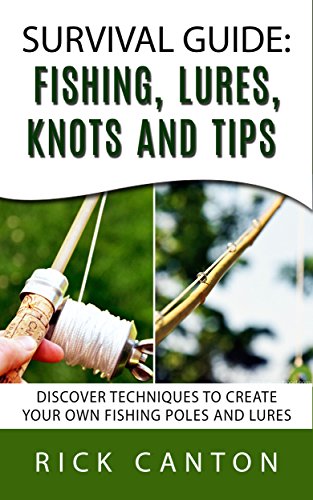
Identifying Potential Fishing Spots
Understanding Fish Behavior
To effectively identify fishing spots, it’s important to understand fish behavior. Fish are attracted to certain areas based on factors such as food availability, water temperature, and underwater structure. Research the species of fish you plan to target and learn about their preferred habitats and patterns of movement. By understanding fish behavior, you can narrow down potential fishing spots and increase your chances of success.
Recognizing Habitat and Cover
Fish seek shelter and protection in underwater structures such as rocks, submerged vegetation, or submerged trees. These structures provide hiding places and ambush points for fish, making them ideal fishing spots. Look for signs of habitat and cover, such as changes in water depth, visible submerged vegetation, or underwater structures. By recognizing these features, you can identify potential fishing spots where fish are likely to be present.
Finding Food Sources
Fish are constantly on the lookout for food sources. They are attracted to areas where there is an abundant supply of prey, such as baitfish, insects, or other aquatic organisms. Look for signs of feeding activity, such as jumping fish or diving birds, as these indicate the presence of food sources. In addition, pay attention to the presence of underwater vegetation, as it often attracts smaller organisms, which in turn attract larger fish.
Using Technology to Your Advantage
In today’s digital age, technology can be a valuable tool in identifying potential fishing spots. Use tools such as fish finders or depth sounders to locate underwater structures, changes in depth, or schools of fish. Additionally, take advantage of online resources, such as fishing forums or apps, to gather information about fishing hotspots, recent catches, and local fishing reports. By combining traditional knowledge with modern technology, you can maximize your chances of finding productive fishing spots.
Using Natural Baits
Types of Natural Baits
Natural baits are a popular choice among anglers, as they imitate the fish’s natural prey and often attract a wide range of fish species. Common types of natural baits include worms, insects, crustaceans, and small fish. Each type of bait has its own advantages and is suitable for different fishing situations. Experiment with different types of natural baits to determine which ones work best for the fish you’re targeting.
Collecting and Preparing Natural Baits
Collecting and preparing natural baits can be a fun and rewarding part of the fishing experience. To collect worms, simply dig in moist soil or use a worm box to cultivate your own supply. Insects and crustaceans can be caught by using a net or trap. When it comes to small fish, check local regulations and only use legal and ethical methods for collecting baitfish. Ensure that your natural baits are fresh and properly stored to maintain their effectiveness.
Techniques for Using Natural Baits
When using natural baits, it’s important to present them in a way that attracts fish. Use techniques such as float fishing, bottom fishing, or live lining to effectively present your bait to fish. Experiment with different rigging methods, such as using a bobber or weight, to adjust the depth at which your bait is presented. Pay attention to the behavior of the fish and adjust your technique accordingly to increase your chances of getting a bite.
Tips for Maximizing Success
To maximize your success when using natural baits, consider a few tips. Firstly, be patient. It may take some time for fish to locate and bite your bait. Secondly, observe the behavior of the fish. Pay attention to natural cues, such as water temperature or feeding patterns, to determine the best times and locations for using natural baits. Lastly, practice proper bait presentation. Ensure that your bait looks natural and moves convincingly in the water to entice fish to strike.
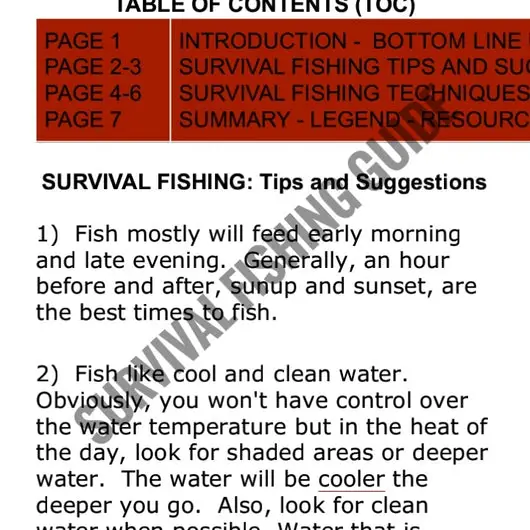
Using Artificial Lures
Different Types of Lures
Artificial lures are designed to mimic the movement and appearance of natural prey. There are various types of lures available, each designed to target specific fish species and fishing conditions. Common types of lures include crankbaits, soft plastics, spoons, and spinners. Each type of lure has its own unique action and can be used in different fishing techniques.
Selecting the Right Lures
When it comes to selecting the right lures, consider factors such as the fish species you’re targeting, the water conditions, and the desired depth at which you want to fish. Choose lures that closely resemble the fish’s natural prey and match the color and size of the forage in the area. Experiment with different lures and observe which ones are most effective in attracting fish.
Techniques for Using Artificial Lures
Using artificial lures requires a combination of skill and technique. Practice different casting and retrieval methods to determine which ones yield the best results. Vary your retrieval speed, pause at intervals, or use jerking motions to create an enticing action that triggers fish to strike. Pay attention to the behavior of the fish and adapt your technique accordingly to increase your chances of success.
Tips for Increasing Strikes
To increase your chances of getting strikes with artificial lures, consider a few tips. Firstly, pay attention to the water conditions. Adjust your lure selection and retrieve speed based on factors such as water clarity, temperature, and the presence of baitfish. Secondly, experiment with different colors and sizes of lures to see which ones produce the most strikes. Lastly, be observant of your surroundings. Look for signs of feeding activity or underwater structure that may attract fish and increase your chances of getting strikes.
Understanding Fishing Regulations
Familiarizing Yourself with Local Laws
Before you head out to fish, it’s important to familiarize yourself with the local fishing laws and regulations. Each state or country may have its own set of rules regarding fishing seasons, catch limits, and gear restrictions. These regulations are in place to protect fish populations and ensure sustainable fishing practices. By knowing and following the rules, you can contribute to the conservation of fish populations and avoid potential legal issues.
Obtaining Proper Fishing Licenses
In many jurisdictions, a fishing license is required to legally fish. Fishing licenses help fund conservation efforts and support fisheries management. Before you go fishing, make sure to obtain the appropriate fishing license for the area you plan to fish in. Check the regulations and requirements set by the local authorities and make sure to have your license with you while fishing.
Understanding Catch and Release Practices
Catch and release is a practice that involves releasing fish back into the water after they have been caught, rather than keeping them for consumption. It’s an effective way to preserve fish populations and ensure the sustainability of fisheries. When practicing catch and release, it’s important to handle the fish with care to minimize stress and injury. Use proper fishing techniques such as using a landing net, avoiding excessive handling, and quickly releasing the fish back into the water.
Respecting Bag and Size Limits
Bag and size limits are in place to regulate the number and size of fish that can be harvested. These limits help maintain fish populations at a sustainable level and ensure the survival of young fish. It’s important to respect bag and size limits and only keep fish that comply with the regulations. Measure your catch accurately, release undersized fish, and never exceed the bag limit. By following these limits, you contribute to the well-being of fish populations and the overall health of the ecosystem.
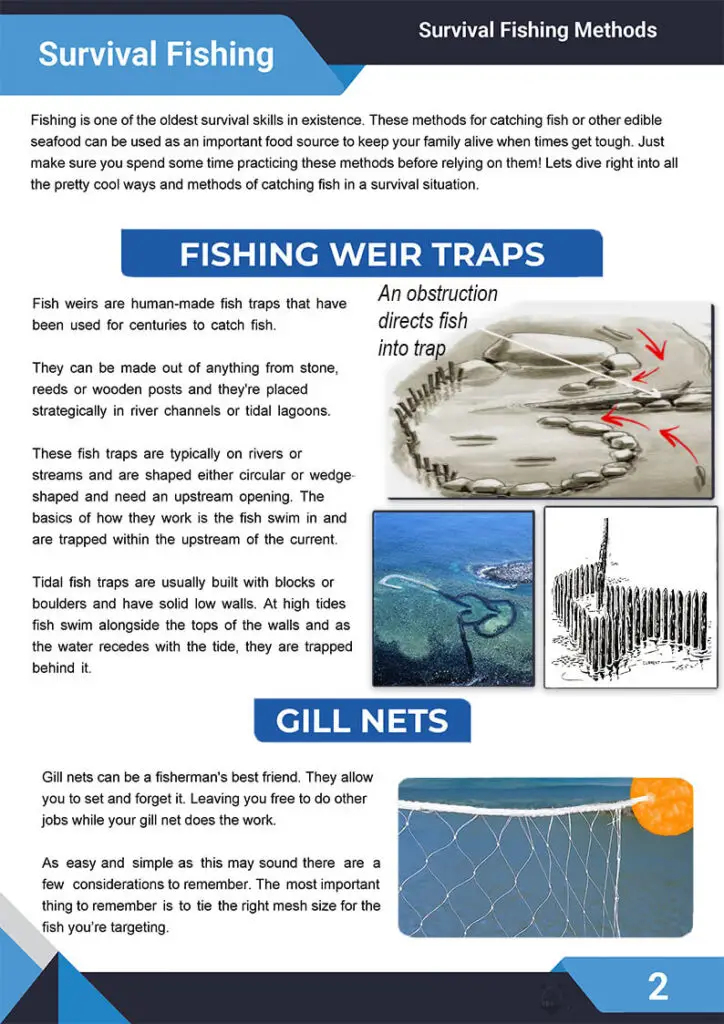
Handling and Cleaning Your Catch
Properly Handling Fish
Properly handling fish is crucial to preserve their quality and taste. When you catch a fish, handle it with wet hands or use a wet cloth to protect its protective slime coat. Never squeeze or press on the fish’s body as it can damage internal organs or cause injuries. If you plan to release the fish, minimize the time it spends out of water and handle it as little as possible. If you’re keeping the fish, transfer it to a cooler or ice to maintain its freshness.
Cleaning and Preparing Your Catch
Cleaning and preparing your catch is an essential step before cooking. Start by scaling the fish using a scaler or a knife. Remove the entrails by making an incision along the belly and pulling out the organs. Rinse the fish thoroughly to remove any blood or debris. If desired, filleting the fish provides boneless, easy-to-cook portions. Alternatively, you can leave the fish whole or remove the head and tail. Whatever method you choose, ensure that your tools are sharp and handle the fish with care to avoid accidents.
Tips for Cooking Over a Campfire
Cooking your freshly caught fish over a campfire can be a delicious and rewarding experience. Start by cleaning and gutting the fish as mentioned earlier. Season the fish with salt, pepper, and any other desired spices. Place the fish on a grill or use a makeshift cooking surface such as a green stick or flat rock. Cook the fish over the campfire, turning it occasionally until it is cooked throughout and the flesh is opaque and flakes easily. Serve your flavorful catch with some freshly squeezed lemon and enjoy a satisfying meal in the great outdoors.
Survival Fishing Techniques
Building Fish Traps
Fish traps are an effective way to catch fish in a survival situation. They can be constructed using natural materials such as rocks, branches, or vines. Choose a location in the water where fish are likely to pass through, such as near underwater structures or along a current. Create a funnel-like structure that guides fish into the trap, gradually narrowing the opening. Be patient, as it may take some time for fish to enter the trap. Check your trap regularly and cautiously approach to retrieve any fish that are caught.
Using Natural Tools and Materials
In a survival situation, natural tools and materials can be used to improvise fishing gear. Use a sturdy branch as a makeshift fishing rod and tie a length of fishing line or string to create a fishing line. Attach a hook or makeshift lure to the fishing line and use natural bait or forage as bait. Look for insects, worms, or small organisms to use as bait. Remember to be resourceful and make use of what’s available in your surroundings to increase your chances of catching fish.
Improvising Fishing Gear in Emergency Situations
In emergency situations, you may not have access to fishing gear. However, with some creativity and ingenuity, you can improvise fishing gear using everyday objects. Consider using items such as soda cans, bottle caps, or safety pins as makeshift hooks. Use clothing, shoelaces, or paracord as fishing line. Natural materials such as tree branches or vine can be used as fishing rods. While these improvised fishing gear may not be as effective as proper fishing gear, they can help you catch fish in survival situations.
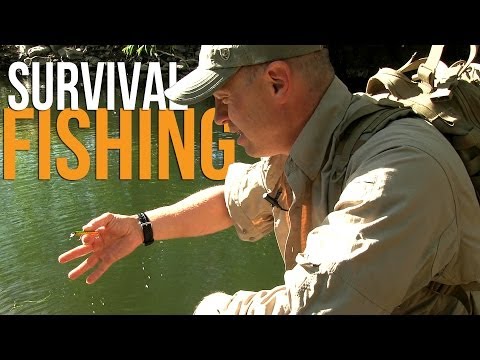
Safety Precautions
Wearing Proper Protective Gear
When engaging in fishing activities, it’s important to prioritize safety. Wear appropriate protective gear such as a life jacket or personal flotation device, especially if you’ll be fishing from a boat or in deep water. Protect your hands from cuts or abrasions by wearing fishing gloves. Don’t forget to apply sunscreen to protect your skin from harmful UV radiation. By wearing the right protective gear, you can minimize the risk of accidents or injuries while enjoying your fishing experience.
Knowing How to Swim
Having basic swimming skills is important when it comes to fishing. Accidents can happen, and knowing how to swim can be a lifesaving skill in case you fall into the water. Consider taking swimming lessons or practicing swimming regularly to build your confidence and ability in the water. It’s always better to be prepared and equipped with the necessary skills to ensure your safety while fishing.
Being Aware of Environmental Hazards
When fishing, it’s important to be aware of potential environmental hazards. This includes being mindful of strong currents, slippery rocks, or sudden changes in water depth. Be cautious when wading in unfamiliar waters and avoid areas with submerged obstacles or debris. Keep an eye out for inclement weather conditions, such as thunderstorms or strong winds, and seek shelter if necessary. By staying aware of your surroundings and potential hazards, you can ensure a safe fishing experience.
Using Fire Responsibly
If you plan on having a campfire while fishing, it’s important to use fire responsibly. Ensure that you follow fire safety guidelines and regulations set by the local authorities. Choose a safe location for your campfire, away from flammable materials and vegetation. Keep a bucket of water or a fire extinguisher nearby in case of emergencies. Never leave a campfire unattended and fully extinguish it before leaving the area. By practicing responsible fire management, you can prevent wildfires and contribute to the conservation of natural resources.
Tips for Successful Survival Fishing
Be Patient and Observant
Survival fishing requires patience and keen observation. Fishing may not always yield immediate results, so be patient and give yourself time to catch fish. Observe the behavior of fish, the movement of the water, and signs of feeding activity. Use this information to make informed decisions about where and when to fish. By being patient and observant, you can increase your chances of successful survival fishing.
Adapt and Experiment
Survival fishing often calls for adapting to different situations and making the most of limited resources. Be willing to try different techniques and adapt your strategies based on the conditions you face. If one method doesn’t work, don’t be discouraged. Experiment with different baits, lures, or fishing spots until you find what works best for you. Remember, in a survival situation, flexibility and adaptability are key to your success.
Learn from Local Experts
If you find yourself in a new fishing environment, seek guidance from local experts or experienced anglers. They have valuable knowledge about the local fish species, preferred fishing techniques, and productive fishing spots. Learn from their expertise and ask for advice or tips that can improve your survival fishing skills. By tapping into the local knowledge, you can fast-track your learning and increase your chances of catching fish.
Practice and Hone Your Skills
Survival fishing is a skill that requires practice and honing. Take every opportunity to go fishing and practice different techniques. Learn how to cast accurately, master different retrieval styles, and fine-tune your bait presentation. The more you practice, the more proficient you become. By continuously honing your skills, you’ll improve your chances of catching fish in survival situations.
In conclusion, choosing the right fishing gear, mastering essential fishing techniques, identifying potential fishing spots, and utilizing natural baits or artificial lures are all important aspects of successful fishing. Understanding fishing regulations, handling and cleaning your catch, knowing survival fishing techniques, taking safety precautions, and following helpful tips can enhance your fishing experience and increase your chances of success. Whether you’re a beginner or an experienced angler, applying these techniques and tips can elevate your fishing game and provide you with a rewarding and enjoyable fishing adventure.
